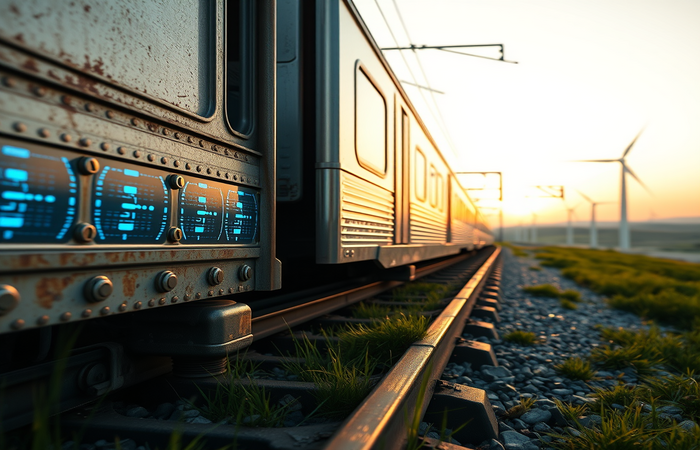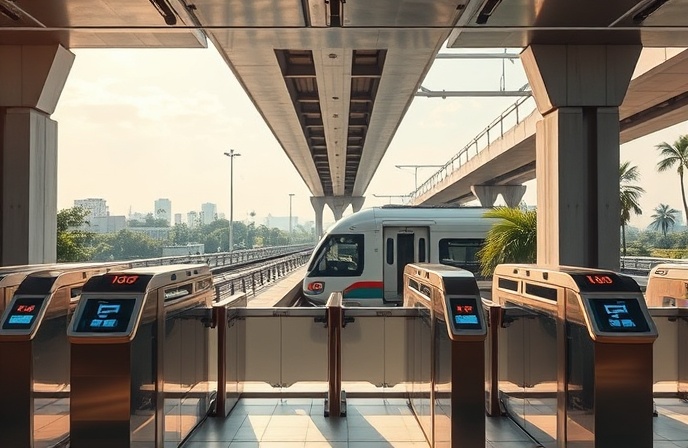India Railway Project Signals Change in Infrastructure Strategy

A new railway line which will be carve the difficult terrain of India’s Western Ghats mountain range, could signal a turning point for the country in overcoming challenges with infrastructure development.
Plans were announced last week by JSW Group, an US$11 billion Indian conglomerate, best known for steel production and with interests in energy and infrastructure, to develop a new railway corridor running almost 34 kilometres from Jaigarh port to the upcoming Digni station on the Konkan Railway in the western state of Maharashtra. Jaigarh is about 300km south of Mumbai, the biggest city in Maharashtra.
The rail link, which is expected to boost cargo transportation of goods including bulk commodities is to be developed under a public-private partnership (PPP) model at a cost of more than 7.7 billion rupees. It is expected to take two-and-a-half years to build.
Insufficient infrastructure is widely considered to be a significant factor holding back India’s economic growth prospects. The consensus is that the country needs growth of 8 per cent or more to support and create jobs for its population of more than 1.2 billion.
The railway project “does signal the revival of the stalled PPP model, which is the only feasible solution to improve the infrastructure scenario”, says Areef Patel, the vice chairman of Patel Integrated Logistics, which is listed on the Bombay Stock Exchange.
“As far as the cargo movement is concerned, the additional 12 million tonnes per annum of cargo handling expected through the project is definitely a boost. More importantly, the project will forge links with remote areas of Maharashtra from key business hubs, which will definitely reflect in the economy of the state.”
Maharashtra’s chief minister, Devendra Fadnavis, a week ago announced plans by the state government to invest 100bn rupees in developing its railway infrastructure. He highlighted the importance of infrastructure development in economic activity and said that the state was committed to developing its roads, railway, ports and air network and improving connectivity to more remote areas.
Much work is needed. Many projects have stalled because of challenges including funding, regulatory clearances, and land acquisition, for example.
“The fact that over 65 per cent of cargo movement is still through the roads shows the skewed planning for our infrastructure connectivity,” says Mr Patel. “We have one of the vast rail networks, but no last-point connectivity, making it suboptimal. Ports are underdeveloped and air connectivity is far from the desired levels. The story of [our] road network, marked for its poor quality and congestion, is one of missed opportunity given the huge potential and possibilities,” he says.
“Severe capacity constraints and higher costs in the railway sector put further pressure on the road sector, which is always short of funds for maintenance. All sectors have two challenges in common: less connectivity and less quality.”
He says that an investment in infrastructure of 1.7 trillion rupees is required in India.
“The question is how to source it,” he adds. “Land acquisition hassles and taxation add to the woes.”
More efforts need to be made by the central government to facilitate development, he says.
“The government should be more focused on the ongoing projects and the golden quadrilateral, which should facilitate strong connectivity among the metros, east-west and north-south corridors. The government should revisit and revitalise the projects by shelving the projects that are not feasible and must fast-track projects like new airports in tier one and tier two cities, establishing new freight stations, develop the road and rail connectivity and airports.”
The World Bank in a recent report on India’s development highlighted the country’s weak infrastructure as an area that desperately needed to be addressed.
“The pace of reforms will need to be stepped up to bridge the yawning infrastructure gap,” according to the World Bank.
“Amidst thin fiscal space, there is limited scope for public investment to help bridge the infrastructure deficit,” it says. “Unlocking private investment would be crucial. Alternative channels of long-term investment need to be explored while reviving the PPP model of financing to meet India’s yawning infrastructure gap.”
There have been some initiatives by the government to improve the situation, however, including allocation of public funds towards infrastructure announced in prime minister Narendra Modi’s first full year budget unveiled in February for the current financial year.
“The government has sought to increase investment in infrastructure by the public sector, specifically in roads and railways, in order to ‘crowd in’ private investment, according to the World Bank.
“The allocation in the budget for infrastructure investment by the private sector is estimated at 700bn rupees. Besides, to encourage greater private-sector financing in infrastructure, the budget announced tax-free bonds to raise funds for railways, roads and irrigation projects, plans to revive the PPP model to encourage greater private-sector participation in large infrastructure projects, and corporatisation of public-sector ports and their conversion into companies under the companies act to attract investments therein.”
The JSW rail link would be funded through combination of equity and debt, according to JSW. It holds the majority stake in the company which is a “special purpose vehicle” for the project, called Jaigarh Digni Rail, while the remainder is held by Konkan Railway Corporation and the Maharashtra Maritime Board.
The union railway minister, Suresh Prabhu, was quoted as saying in The Hindu, an Indian national newspaper, that it would use the model of the new project “to connect all the minor ports in the country to the rail network”.
Sajjan Jindal, the chairman and managing director of JSW Group, says that the new rail connection will “provide impetus to economic activities” and its Jaigarh port would “get a major boost”.
He says: “We are sure this will bring a socio-economic change in the region by creating more job avenues.”
Jaigarh port has a capacity of 15 million tonnes a year with two berths and is expanding to have a capacity of 65 million tonnes a year by 2020, according to JSW.
It believes that there is scope for much more growth. The group is aiming to increase its total ports capacity in India to 200 million tonnes from 33 million tonnes over the next five years, The Economic Times, a business newspaper in India, reported.
“We are looking at the east coast in a serious way,” Mr Jindal said. “We will either build or acquire. Everything right now is a work in progress.”
Source : thenational.ae





